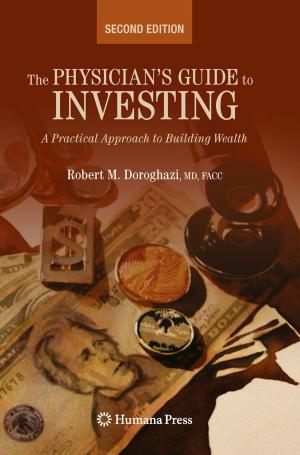Sports Endocrinology
Nonfiction, Health & Well Being, Medical, Specialties, Internal Medicine, Endocrinology & Metabolism| Author: | ISBN: | 9781592590162 | |
| Publisher: | Humana Press | Publication: | May 1, 2000 |
| Imprint: | Humana | Language: | English |
| Author: | |
| ISBN: | 9781592590162 |
| Publisher: | Humana Press |
| Publication: | May 1, 2000 |
| Imprint: | Humana |
| Language: | English |
Since the observation in the 19th century that an extract of the suprarenal bodies injected into the circulation caused a rise in blood pressure, the endocrine system has become a major component in our understanding of human physiology. The introduction of radioimmunoassay techniques and the ability to measure minimal amounts of hor mones (a term derived from the Greek "to excite") have shown that acute exercise causes a release of a large number of hormones and that chronic exercise may further lead to long-term alterations in endocrine homeostasis. Actually, almost every organ and system in the body is affected by physical activity and exercise, much of it through the endocrine and neuroendocrine system. Investigation ofthe effect of acute or chronic physical activity on the endocrine system is a complex matter since the stimulus called "exercise" has many components, such as mode, intensity, duration, and others. In addition, several other factors, such as age, gender, training status, body temperature, circadian rhythm, metabolic state, menstrual cycle, and various external conditions as well as psychological factors, can modify the effect of physical activity on hormonal secretion. Moreover, the physiol9gical stimulus of exercise often provokes several and parallel cascades of biochemical and endocrine changes. It is therefore often extremely difficult to distinguish between primary and secondary events and between cause and effect. These limitations will be discussed in Chapter 1.
Since the observation in the 19th century that an extract of the suprarenal bodies injected into the circulation caused a rise in blood pressure, the endocrine system has become a major component in our understanding of human physiology. The introduction of radioimmunoassay techniques and the ability to measure minimal amounts of hor mones (a term derived from the Greek "to excite") have shown that acute exercise causes a release of a large number of hormones and that chronic exercise may further lead to long-term alterations in endocrine homeostasis. Actually, almost every organ and system in the body is affected by physical activity and exercise, much of it through the endocrine and neuroendocrine system. Investigation ofthe effect of acute or chronic physical activity on the endocrine system is a complex matter since the stimulus called "exercise" has many components, such as mode, intensity, duration, and others. In addition, several other factors, such as age, gender, training status, body temperature, circadian rhythm, metabolic state, menstrual cycle, and various external conditions as well as psychological factors, can modify the effect of physical activity on hormonal secretion. Moreover, the physiol9gical stimulus of exercise often provokes several and parallel cascades of biochemical and endocrine changes. It is therefore often extremely difficult to distinguish between primary and secondary events and between cause and effect. These limitations will be discussed in Chapter 1.















